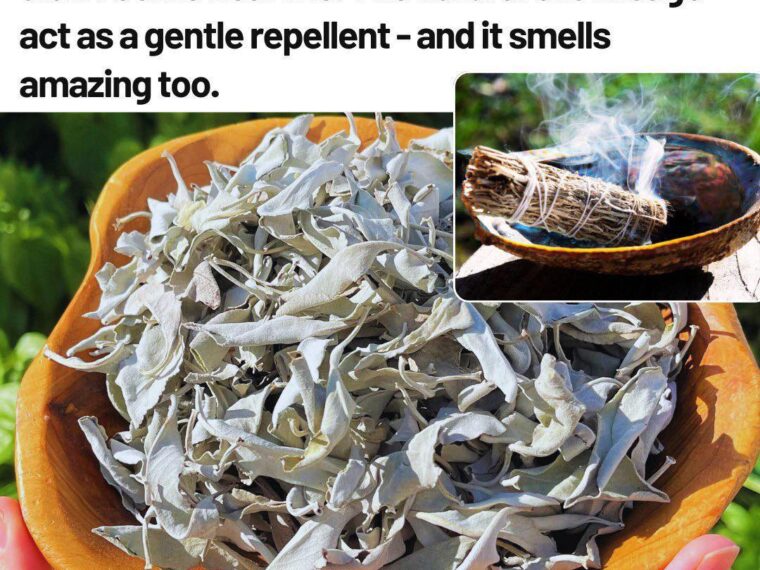- Burning sage and other medicinal herbs reduced airborne bacteria by up to 94% within one hour in a closed room.
- The purified air remained almost free of harmful bacteria for up to 24 hours after smudging.
- Some pathogenic bacteria were still absent even after 30 days in the smudged environment.
This shows that sage smoke’s antimicrobial properties could make it a natural, effective air purifier for enclosed spaces.
How Does Smudging Work?
The air-cleaning effect comes from bioactive compounds in sage, like volatile oils and terpenes—including 1,8-cineole (eucalyptol), camphor, and thujone.
When burned, these compounds release into the air and may disrupt the cellular structures of bacteria, killing or neutralizing them.
- 1,8-Cineole (Eucalyptol): Has antibacterial and anti-inflammatory effects and inhibits bacteria and fungi growth.
- Camphor: Known for strong antimicrobial and antiviral properties, helping eliminate harmful pathogens.
- Thujone: A major component of white sage with antimicrobial and insect-repellent effects.
Together, these compounds explain the purifying power of sage smoke.
Other Benefits of Smudging
Besides killing bacteria, smudging may:
- Reduce airborne allergens like dust, mold spores, and pet dander, easing respiratory sensitivities.
- Improve mood and mental clarity by reducing stress and anxiety through calming compounds in sage.
- Repel insects naturally, helping keep away mosquitoes and flies.
- Balance energy from a spiritual perspective by clearing negative vibes and promoting harmony.
How to Smudge Safely and Effectively
If you want to try smudging, here’s a simple guide:
- Gather materials: A smudge stick (dried sage bundle), a fireproof bowl or shell for ashes, and a lighter or matches.
- Set your intention: Think about why you’re smudging—whether to cleanse your space, invite positivity, or purify the air.
- Light the smudge stick: Ignite the tip, let it burn briefly, then blow out the flame to create smoke.
- Move the smoke: Use a feather, fan, or your hand to waft smoke through your space, focusing on corners, doorways, and stagnant air areas. You can also wave smoke over yourself or objects to cleanse them.
- Let the smoke settle: After smudging, let the smoke linger and then open windows to let fresh air circulate and disperse any lingering smoke and negative energy.
- Extinguish safely: Press the smudge stick tip into the fireproof bowl until fully out. Never leave a smoldering stick unattended.
Final Thoughts
While smudging has deep cultural and spiritual roots, scientific research is showing that this ancient practice can also have practical benefits for air quality and health by reducing airborne bacteria and allergens.
So next time you light a sage smudge stick, know you’re not only honoring tradition but potentially creating a cleaner, healthier space.





